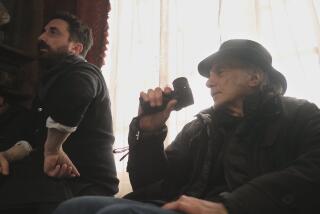Bank Takeover Ends Era for Spanish Star : Finance: Mario Conde was the symbol of modern, entrepreneurial Spain. The Bank of Spain acted because of his bank’s deficit of nearly $3 billion.
- Share via
MADRID — With a youthful image, elegant designer suits and greased-back hair, Mario Conde cut a dashing figure over the past six years as he became the star of Spanish banking and a symbol of Spain’s modernization.
But Wednesday, Conde’s empire appeared to have crumbled after the Bank of Spain kicked out the flamboyant banker and his board of directors at Banco Espanol de Credito (Banesto), one of Spain’s top five banks.
“Curtains Down on Conde Era,” read the headline of an editorial in the financial daily Cinco Dias on Wednesday, a day after the Bank of Spain named its own board to take over the ailing Banesto.
The move sent shock waves through the country’s financial system.
“For more than five years, Banesto and Mario Conde were leading players on Spain’s public stage. Yesterday those roles were cut out,” the daily El Pais said.
The irony of the collapse occurring Dec. 28--Spain’s equivalent of April Fool’s day--was lost on no one.
Although full details of the bank’s problems are unlikely to surface for some time, Bank of Spain officials told reporters the action was taken because the central bank uncovered a gaping deficit on Banesto’s balance sheet.
News reports estimate the deficit to be in the region of $2.85 billion.
Conde, who was born in the tiny northwestern town of Tuy, had little experience in bank management when he rose from a minor share-holding position to become chairman of Banesto in 1987 after successfully opposing a hostile takeover bid by Spain’s Banco de Bilbao.
Conde was already a self-made millionaire from previous dealings in the antibiotics business. The publicity surrounding his victory over Banco de Bilbao gained him enormous prestige both in business and political circles, with some columnists mentioning him as a possible candidate for prime minister.
From there on, his star rose constantly. His face became as common in the gossip magazines as in the financial press.
Unlike his colleagues from the tradition-bound, staid and hermetic world of Spanish banking, Conde was often besieged by photographers and autograph seekers when he turned out in public.
“Conde symbolized the new yuppie, shark entrepreneur of modern Spain, which was fine for the media, but in banking, if you do things wrong, it inevitably surfaces somewhere along the line,” said Benito Vera, a financial analyst for Madrid brokerage Iberagentes.
To his supporters, Conde was a man who took on a daring challenge in trying to sort out Banesto’s debt-laden accounts, and almost succeeded.
Admired as a tough negotiator, Conde surprised many earlier this year when he clinched the confidence of the U.S. bank J.P. Morgan & Co., which became Banesto’s U.S. financial adviser.
For others, Conde’s inexperience and general lack of banking know-how was a portent of trouble for Banesto.
Many analysts believe Conde’s initial mistake was in opting out of the merger trend of the late 1980s and opposing the takeover bid by Bilbao.
“Banesto’s problems started to get out of hand when Conde took over, although he may not have been the only person responsible,” Vera said.
Instead, Banesto focused on building an empire that expanded beyond industrial holdings to include stakes in media concerns and sports groups, such as the star cycling team of Tour de France champion Miguel Indurain.
Vera believes the tide turned against Conde in 1991 when, unlike most banks, Banesto launched an aggressive loan policy.
As the bad debts mounted, many of the bank’s industrial holdings had to be sold off to cover the losses.
More to Read
Sign up for Essential California
The most important California stories and recommendations in your inbox every morning.
You may occasionally receive promotional content from the Los Angeles Times.













